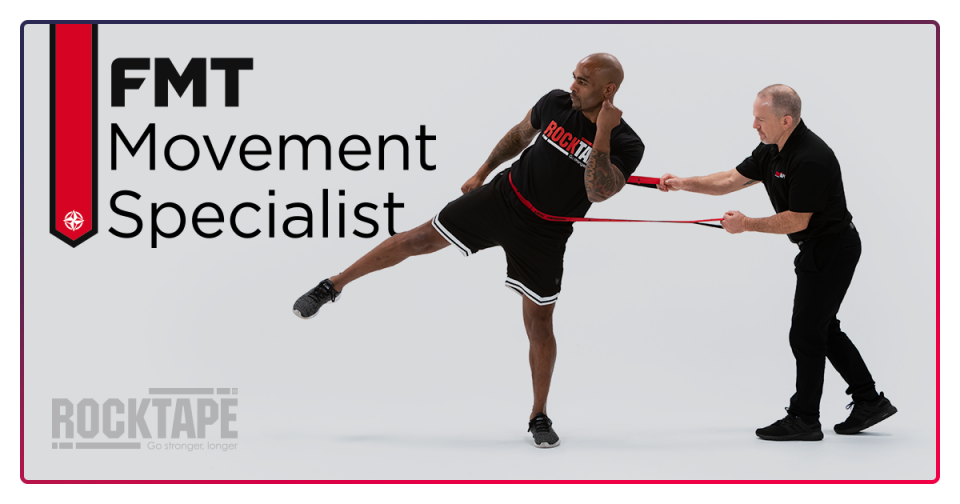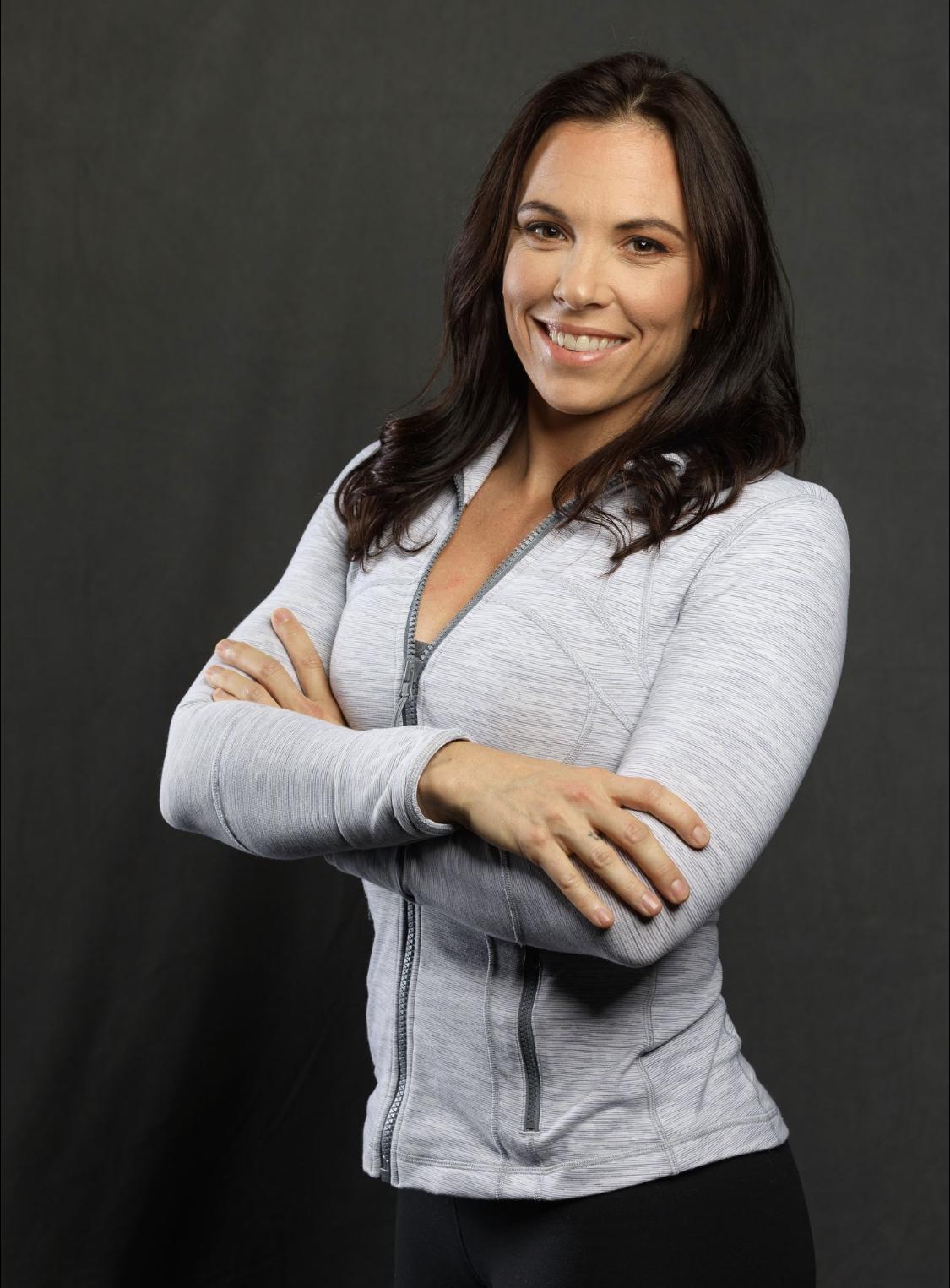RockTape FMT Movement Specialist
Conscious Movement Assessment by Dr. Meghan Helwig
Includes all course content in digital format

Description
There is no ‘one size fits all’ to human movement, rather there are many ‘human shapes’ that can accomplish the same movement goals.
More important than stereotypic standards and measurements to ‘ideal’ movements we can provide a more COMPLETE strategy to movement screening by looking at the complete person, their environment and their unique ‘parts’.
FMT Movement Specialist is designed to help health and fitness professionals learn safe, simple, and effective tactics to screen and assess ‘conscious’ movement patterns. Attendees will learn multiple ‘quick’ screens and assessments along with corrective exercises tactics and strategies of the ‘conscious’ fundamental movement of the deep squat.
A variety of interventional tools (mobility balls, exercise bands, foam rollers, compression flossing bands, agility and conditioning equipment) will be used to tackle an evidence-informed, brain-based approach to movement improvement and functional performance programming. The use of digital motion analysis technology will be presented to demonstrate how health and fitness professionals enhance their objectivity when assessing human movement.
Functional Movement Training (FMT) courses are taught by industry leading experts in movement assessment, performance and rehabilitation. CEUs may be offered for DC, ATC, PT, LMTs, LAc, OTs and personal trainers. If your profession & state is unavailable, we do not currently offer CEUs – however, we are continually adding additional licenses.
Note: Tools are not provided with this course.
Want to enhance your course experience? You can! here is a list of the suggested material for this course: RockBands, Grid Roller, Floss, MB deep tissue Mobility ball
Expand your knowledge and your practice. Join our Health & Fitness professional program and get up to 50% off every purchase + exclusive benefits! Start saving now!
Learning Objectives
- Define and compare conscious and subconscious movement evaluation and training strategies
- Define an d evaluate client psychological/personality traits that influence human movement
- Compare and contrast methods of brain-based (neurological) vs mechanical screening and assessments of ‘conscious’ movement
- Evaluate and justify the importance and utilization of midline (core) control in order to improve effectiveness and efficiency of ‘conscious’ movement
- Understand and discuss the use of digital motion analysis to objectively capture human movement
- Outline factors that contribute to effective movement performance
- Critique and demonstrate therapeutic movement tactics with compressional floss, foam rollers and exercise bands
- Evaluate and justify differences between neural vs. somatic restrictions (Brain vs. Tissue influences) on conscious human movement
Course Procedure
This course is 6 hours in length and a 30 Question multiple choice quiz will be required after completing the course to receive your CEU certificate. A 70% test score is required to pass and receive CEUs. The quiz can be open book and unlimited attempts on the quiz are allowed.
Course Content
| FMT Movement Specialist: Conscious Movement Assessment | Module |
Dr. Meghan Helwig

Dr. Meghan Helwig graduated with her Doctorate in Physical Therapy from Rutgers University. A native of Morris County, NJ, Dr. Helwig earned a finance degree from Villanova University where she was the starting goalie for 4 years for the Div. I Big East Field Hockey Team.
An athlete her entire life Dr. Helwig has a competitive mindset and understands the demands sport and life place on the body. She has numerous “tools in her toolbox” and has combined concepts and techniques such as ART, SFMA, NKT, DNS, TPI, Rocktape IASTM/Blades, Kinesiology Taping, and cupping to create her own unique system for assessment and intervention. She utilizes these tools and techniques to assess and treat her patients as a whole while uncovering the underlying “WHY” behind her patients' symptoms.
HOUR ONE
Who is a Movement Specialist (Ch 1)
- Where does the movement specialist fit with other professionals?
- How to we best collaborate?
How to we categorize movement (Ch 2)
- Conscious vs Subconscious Movement
- Conscious Movement qualities
- Subconscious movement qualities
- Movement signatures, individual differences
- Can your subject make the “shape”?
- Is movement efficient?
- Is movement effective?
- How does the environment influence movement?
- How is fear and threat involved?
- Autonomic Heisman concept
Movement Variability (Ch 3)
- Movement Variability concepts and influence on subconscious movement
- Movement Chameleon concepts and influence on subconscious movement
- Movement Lab Experience (stand to floor to stand) with Instructor Feedback
HOUR TWO
History (Ch 4)
- Acknowledging experts in the field and their contribution to the FMT method of approach
Movement Screening and Assessment (Ch 5)
- Discussion on screening’s goals
- Target movement: Deep Squat
- Influence of Brain, Midline and Mechanics on conscious movement performance
- Mechanical screen – effectively assume shape
- Brain screen – efficiency factor
- Midline screen – ability to control 3 planes in environment (adaptability)
- Assessment reliability and validity
- Digital Movement Assessment – Demonstrate the utility of using digital movement tools to objectify movement dysfunctional patterns
- Lab and instructor feedback
HOUR THREE
Psychosocial Aspects (Ch 6)
- Psychology’s influence on conscious movement patterns
- Personality influence on conscious movement patterns
Threat Screen (Ch 7)
- Kinesiophobia testing with validated questionnaires (FABQ, Tampa Scale) as it relates to movement capacity
- FMT Threat Screen – creating unvalidated tests
- Red Light – Significance on ‘conscious’ movement performance
- Yellow Light – Significance on ‘conscious’ movement performance
- Green Light – Significance on ‘conscious’ movement performance
- Lab and instructor feedback
Personality Screen (Ch 8)
- Personality screen testing, scoring and score relevance
- Lab and instructor feedback
Subsystems (Ch 9)
HOUR FOUR
Brain Subsystem (Ch 10)
- 2 Pt Discrimination Assessment and its relevance on ‘conscious’ movement
- Foot Zone Mapping and its relevance on ‘conscious’ movement
- Corrective Tactics with equipment to intervene on mapping dysfunction
- Re-screen/Assess target movement – Deep Squat
- Discuss system of approach with Hip and Shoulder Zone
- Tactics with equipment and instructor feedback
HOUR FIVE
Midline Subsystem (Ch 11)
- Spinal engine theory
- Sagittal Plane control
- Lab and instructor feedback
- Tactics with equipment and instructor feedback
- Frontal Plane control
- Lab and instructor feedback
- Tactics with equipment and instructor feedback
- Transverse Plane control
- Lab and instructor feedback
- Tactics with equipment and instructor feedback
HOUR SIX
Mechanical Subsystem (Ch 12)
- Foot Zone Screening and Assessment Strategies
- Foot Zone Corrective Tactics – Mobility and Stability Tactics
- Re-Screen Target Movement – Deep Squat
- Discuss system of approach for Hip/Shoulder Zones
- Case Study Application – application of multi-system approach to ‘conscious’ movement